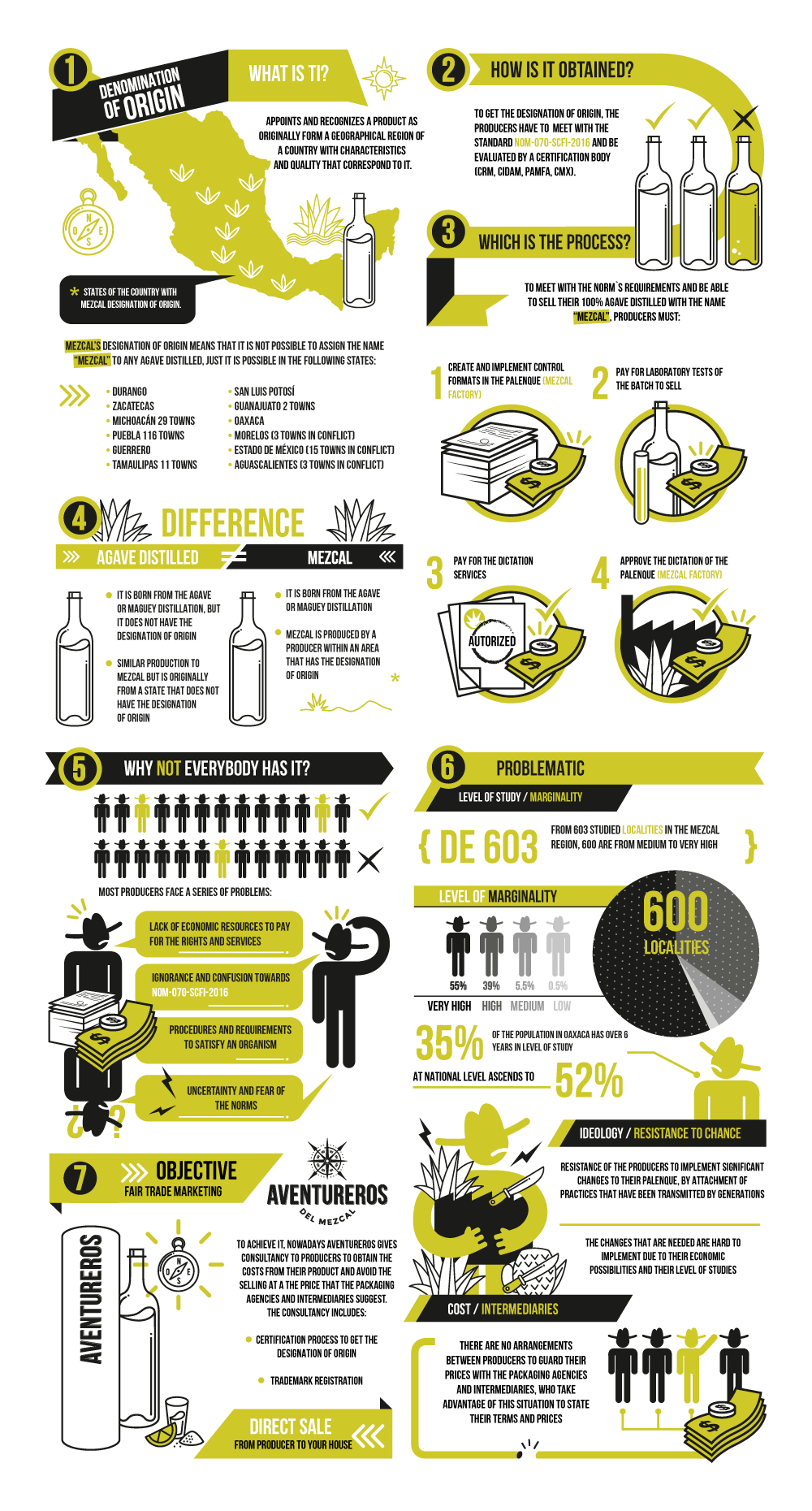
Historically, the mezcal had meaningful importance and influence in the producing communities: in the vision that those villages have and their relation with the mezcal. The mezcal was an inseparable element of rituals like for gratefulness of successful harvests, and/or rainmaking where they asked gods to send rain. This spirit has become a source of income for the local economies, which has survived through a particular network where consumers were part of, and without which many of these communities would not have been able to continue performing their mezcal culture.

SELECTION PROCESS
One important part of the final flavor of mezcal is defined by the characteristics of the maguey: the species, the maturity, the quality, the amount of sunlight received, and the quality of the land where it is planted. The maguey’s selection is done by observation, here it is verified that agave is in the reproduction step and it proceeds to cut its floral scape or quiote.
CUTTING PROCESS
Once it is cut its floral scape or quiote, it is waited until the plant is “mature”. This happens from a period of six months to one year. To make the cutting, the following tools are used: machete, ax, jib, and blade. The person who makes the cutting, known as cutter or jimador, must make a uniform and quick cut.
COOKING
Traditionally, it is done in an inverse conic earth oven. The oven is heated up with hardwood that heats stones to 800 ºC. Then, the oven is covered with wet agave bagasse or other materials. Over this cover is collocated agave piñas. The oven is finally covered with palms, petates, or canvas, and those are covered with soil. This process takes 4-5 days, time depends on the oven size.
MILLING
Depending on the mezcal category, this process can be made by hand with a wooden mallet, in stone or wooden canoes, with a tahona or Chilean mill that is pulled by a pack animal, or with an electric harrow. The maguey disintegrates to obtain a sugary fiber.
FERMENTATION
The sugars are diluted with water either in a clay, leather, wood, or stainless-steel container. During this process, the yeast is in charge of converting agave’s simple sugars into alcohol. Other yeast and bacteria give different aromas and flavors to the drink. This process lasts from 4 to 7 days, depending on the weather.
DISTILLATION
The fermentation product is distilled in copper stills or clay pots, until obtaining a drink that reaches 30º of alcohol, this liquid is called “common”, “ordinary” or “shishe”. This product is re-distilled and this is where fractions ranging from 20 to 80% ABV are obtained. Vol. These fractions are called tips, body, and tails.

How to distinguish a good mezcal?
To define what does mean “good mezcal” is complicated, beginning for defining what is good additionally that there exists too many that satisfy each preference. This is hard. Nevertheless, we are focused on distinguishing a traditional mezcal:
A traditional mezcal makes Perla (the pearly or bubbles are formed from the 43 to 55 alcoholic grads). However, a perlado o durable weld is accomplished between the 48 and 51 grades. These grades of alcohol are the most consumed in the traditional mezcal locations.
A traditional mezcal has the alcohol content as stated before, nevertheless, the NOM allows from 35 to 55 of alcohol content, so, currently, the most consumed mezcales are from 38 to 40 alcohol content.
A traditional mezcal is elaborated by producers who are native to the mezcal towns. We can find very young producers that have learned from their parents and have followed this path. Young producers from the first generation began to work very youth in a mezcal factory (and they are around 25 years old). However, there always exists a maestro Mezcalero behind all these jewels.
A traditional mezcal is always blanco (“white”); the additional processes have deviated from the drink evolution and a little from the marketing product.
A traditional mezcal comes with a strong and complex aroma, finding very different flavors.



